We were lucky to catch up with Laura Petrovich-Cheney recently and have shared our conversation below.
Laura, thanks for taking the time to share your stories with us today Learning the craft is often a unique journey from every creative – we’d love to hear about your journey and if knowing what you know now, you would have done anything differently to speed up the learning process.
As a woodworker and quilter, I am fascinated by the intersections between our changing climate and the complex geometries and narratives embedded in textiles. Most of my pieces are made from repurposed wood collected after natural disasters and then assembled into quilt-inspired sculptures, displaying the very personal impact of natural disasters and the potential for renewal.
I arrived at the quilt tradition in a very unusual way. My mother and I rarely saw eye to eye. She thought sewing was for people who couldn’t afford to buy clothes and blankets. I learned of my mother’s dislike of quilts at an antique store. As soon as we walked in, she recoiled from the musty smell of old that permeates antique shops and emporiums. Me? I ran right in and fell in love with a bright yellow, nine-patch quilt. I begged her to buy it for me—really begged. Her reply was swift and sure, “I am not buying someone’s else used blanket!” We left, promptly. I was stubborn, though, as any teenager is when they’re told no. I vowed that I would get a quilt no matter what my mother thought.
So, I started babysitting to buy a sewing machine, a how-to quilting book, and fabric. My first quilt demonstrated all of the impatience of a seventeen-year-old. But I loved that old blue-and-yellow quilt with the pink back. The seams eventually fell apart and that old quilt eventually became lost to the wear and tear of time. But I still think about it.
Fast-forward to my mid-forties when I decided to pursue a graduate degree. Teaching art full time in an elementary school, I was still actively searching for my own artistic voice. That’s when I fell in love with woodworking. But I didn’t use wood purchased from a store. Rather, I opted for wood found on walks with my dog. Whenever I found something interesting, I thought the universe was giving me a special gift, rewarding me for finding something no one else saw or noticed. During a walk on the beach after a powerful storm, my dog and I found two severely damaged wooden boats, one orange and the other turquoise. I had no immediate plans for those boats, but the wood spoke to me…and my dog. So, we hauled them off the beach and added them to the collection of salvaged wood in my studio.
A few weeks before my graduation, a professor and I met. He knew that in my twenties I had been a fashion designer for a maternity company. “Too bad you never incorporated any fabric into your work, given that you have a fashion degree. I had hoped to see textiles,” he said. I was annoyed that he saved that little gem of an insight for the end of my schooling. However, he planted a seed. I knew he had wanted me to sculpt with textiles, but my takeaway was to push wood and fabric into something new–like a kind of wooden cloth. So, I thought of combining my old love of sewing with my new love of woodworking in an innovative, new direction.
As innovation often happens, the idea of a wood quilt popped into my head when I least expected, sparked by the magazine headline, “Decorating with Quilts,” that caught my eye as I was waiting in line at a grocery store. Intrigued, I opened the magazine and there it was: a turquoise blue-and-orange quilt dappled with white and dark and blue. I couldn’t believe it. The colors of that quilt matched exactly the colors of those boats that I had found. I felt inspired, energized, attuned.
I completed my first wood quilt in January 2012, the year Superstorm Sandy devastated the coastal towns of New Jersey and New York. After the devastation, I collected as much wood as I could find—cedar siding, dressers, kitchen cabinets, screen doors. But this wasn’t just wood. I believe that material has memory; it reminds us of times long past and things long gone. I also found that recreating abstract patterns of quilts comforts and strengthens me in a world so chock-full of chaos. Creating abstract patterns helps me deal with life’s ambiguities and uncertainties of which there are too many. I leave the paint of the salvaged wood as I found it, because retouching its surface would alter its memory and change its recognizable marks that chart its passage of time. The wood carries personal history, identity, and humanity. My wood quilts beg closer examination, so that one can see the uneven heights and surfaces in varying degrees of distress and wear—mimicking life perfectly. Each piece of wood is different. But when the pieces come together, they demonstrate order, repurpose, and resilience.
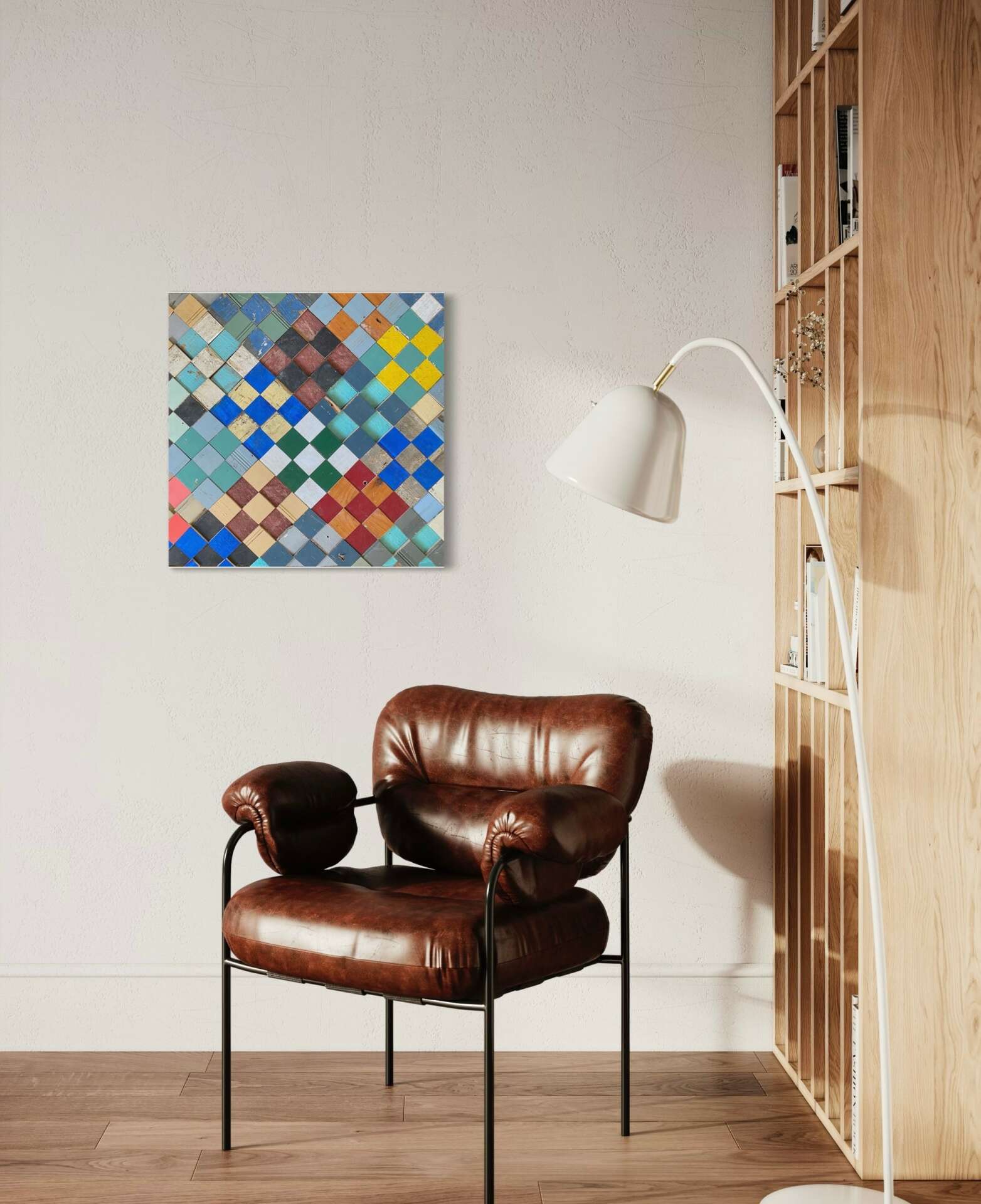
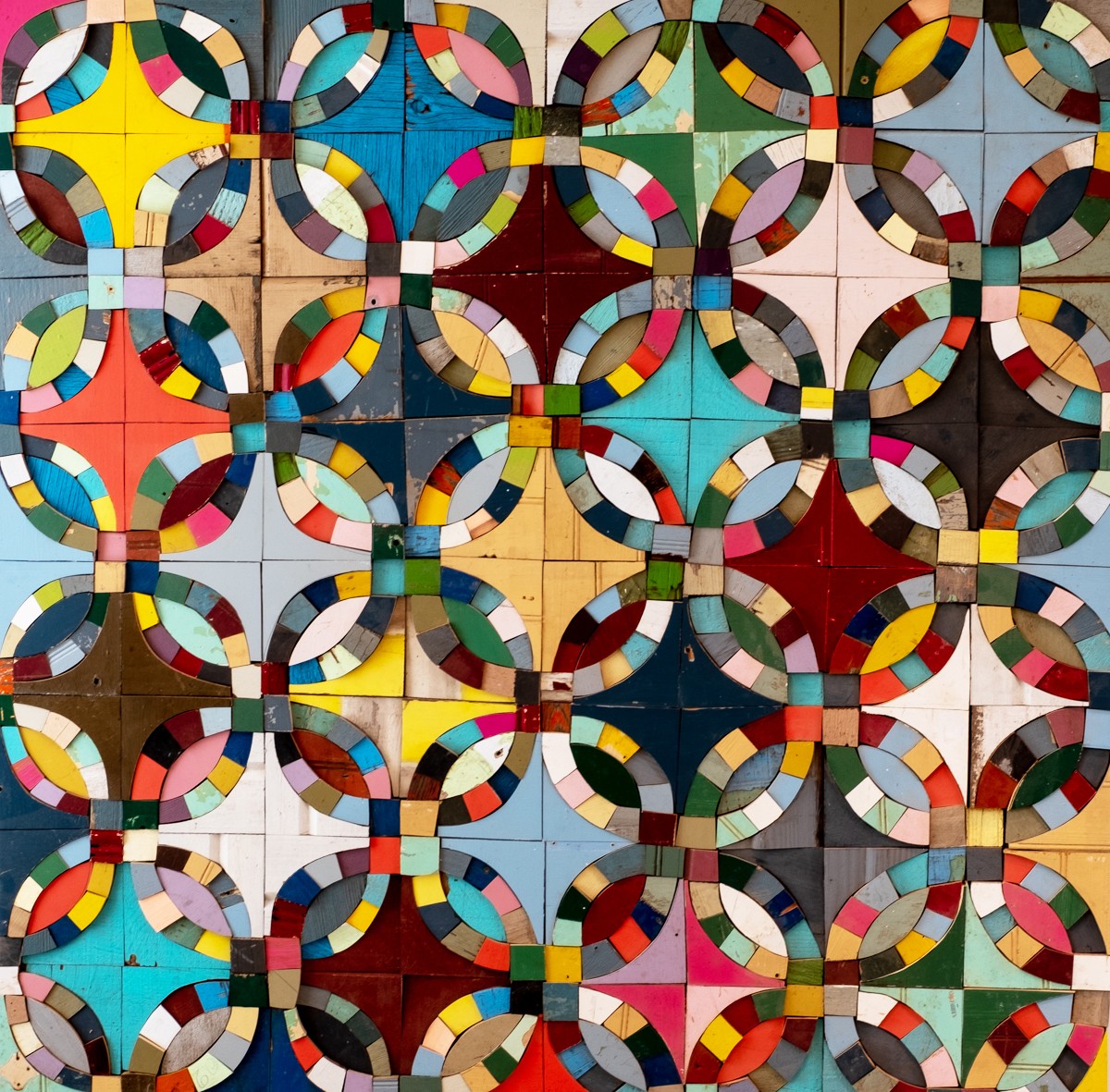
Great, appreciate you sharing that with us. Before we ask you to share more of your insights, can you take a moment to introduce yourself and how you got to where you are today to our readers.
In 2020, when the pandemic, along with political and social crises and increasingly violent storms, presented a series of unprecedented losses and sorrows, my wood quilts became more complex and demanded an unrelenting focus. Once again, creating patterns provides order and respite from the chaos of life. It’s part of our tendency to establish order and demonstrate the natural tendency to make sense of experiences through patterns. My woodworking skills have grown and as a result, allowed me to investigate more complex, repeating shapes. Ideas of repetition merging with personal tragedy was the inspiration for Home Sick, 2020, 48” x 48”. In this piece, the uneven heights and surfaces emphasize the distress and wear—mimicking life perfectly. Each piece of wood is different. Yet, when the pieces come together, they demonstrate order, repurpose, and resilience. The ordinary materials of wood siding, kitchen cabinets, even a dresser covered with stickers become recognizable in their past usage and make accessible the personal themes of loss and transformation, within the context of contemporary craft.
After a four year hiatus from teaching, I returned to the classroom as a part-time elementary art teacher in 2021. I had previously taught full-time from 2001 to 2014 and missed the opportunity to share my skills and knowledge with children. I missed their energy and love and playing with materials in the art room. Through teaching, my students have inspired me to be more centered on play and the joyful exploration of materials.
Craft and play share many similarities, as both involve creativity, imagination, and tactile experience/manipulation. Crafting often involves the creation of physical objects, using various materials and techniques, with elements of playfulness as individuals experiment to create unique and personalized creations.
Both craft and play are essential in promoting creativity, problem-solving, self-expression, and providing a sense of satisfaction and accomplishment. The core of play for me is experimentation, imagination, and freedom, which allow me to step outside my comfort zone and explore new possibilities without fear of failure or judgment. Adopting a playful mindset has allowed me to work with new motifs, such as houses and stars, and create innovative work full of energy and vitality. I recently have started to weave again and hope to incorporate my woven pieces and quilted fabrics into the wooden structures.
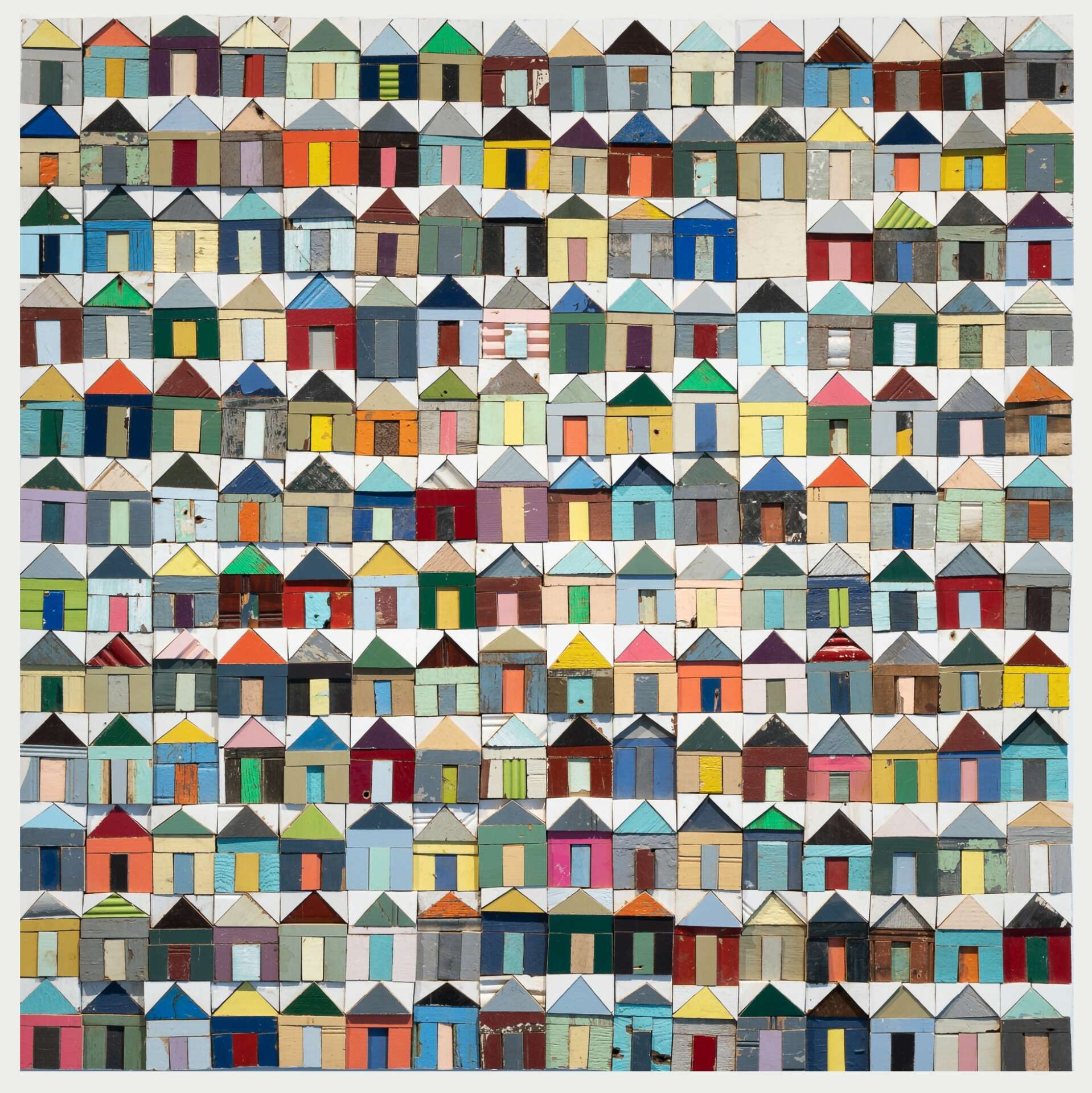
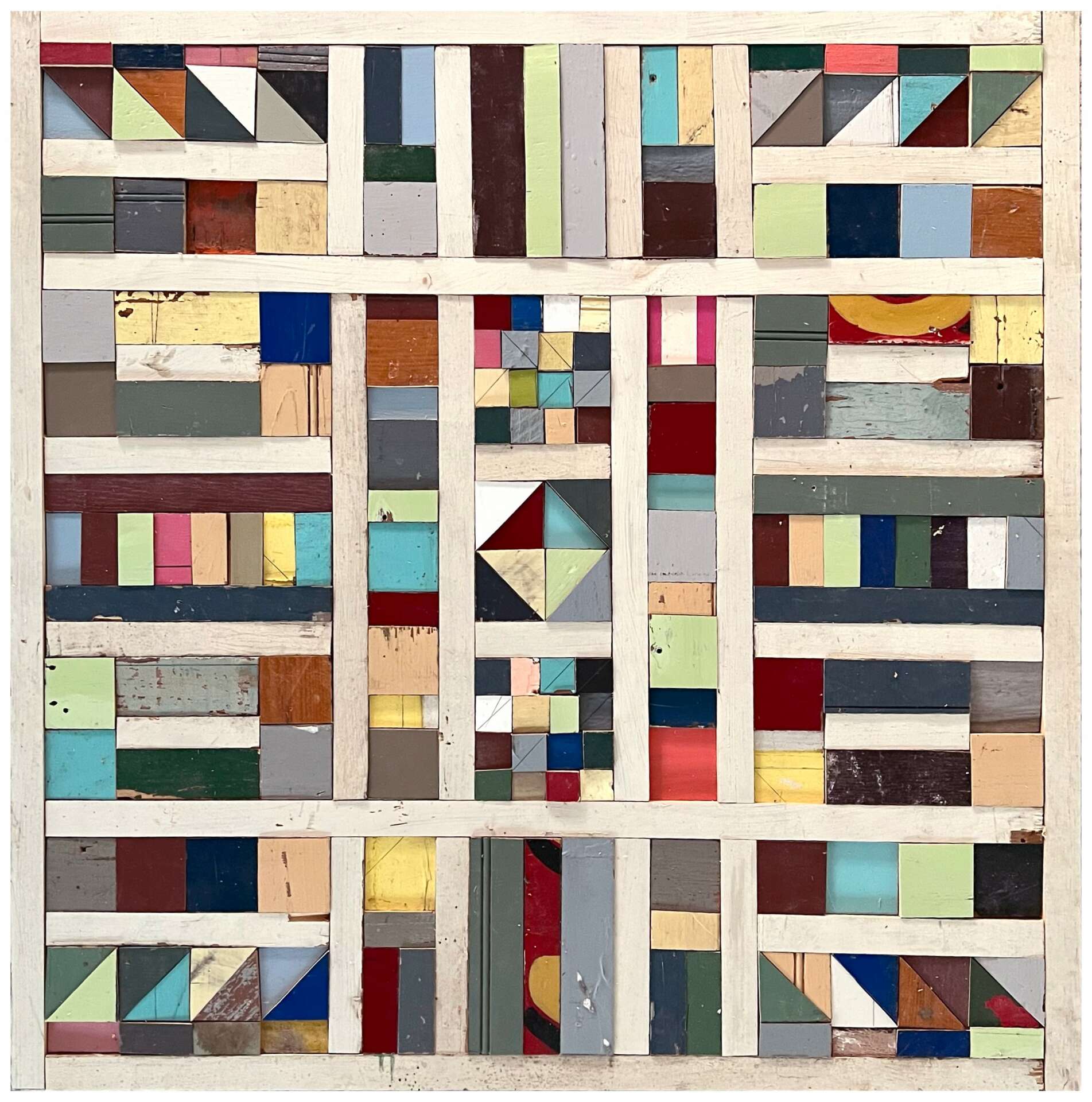
Do you think there is something that non-creatives might struggle to understand about your journey as a creative? Maybe you can shed some light?
As a mid-career artist, I place a high value on building and nurturing relationships within my profession. These connections have proven invaluable in terms of the help I’ve both received and offered to others, including studio visits, introductions to curators, recommendations for residencies, and strengthened friendships. After the lockdown of 2020, I’m even passionate about attending organizing in-person, community-based discussions that encourage dialogue and engagement. By building a vibrant community of fellow creatives, we can offer one another inspiration, share opportunities, and offer guidance, and an authentic way to build lasting friendships.


Are there any books, videos, essays or other resources that have significantly impacted your management and entrepreneurial thinking and philosophy?
First and foremost, I strongly believe that the more effort I put into my work, the more inspiration I find. “Work makes work,” said one teacher in graduate school. This principle has had a profound impact on both my professional practice and personal life. Consistency plays a vital role in this process. Whether it’s going to the gym, tidying up my living space, tending to the garden, or engaging in creative pursuits like making art in the studio, the daily habit of showing up and giving it my best has a tremendous impact on my progress.
Another belief I hold dear is that every person in this world has something valuable to teach others. One of the most enriching experiences is listening to the success stories and failures of different individuals. It’s like living a million lives through their experiences. These stories can be found in various forms, such as books, podcasts, television shows, or movies. They offer unique perspectives and valuable lessons that broaden our understanding of the world.
By embracing the habit of consistent effort and seeking out the wisdom shared by others, I can continuously fuel my own growth and development. It’s through these sources of inspiration and the lessons that I learn from them that I can shape my management and entrepreneurial thinking, ultimately leading to greater success and fulfillment.
Some of my favorite resources have been:
• I know why the caged bird sings, Maya Angelou
• Paradise Lost, John Milton
• Wiser Than Me with Julia Louis-Dreyfus Lemonada Podcasts
• Atomic Habits: An Easy & Proven Way to Build Good Habits & Break Bad Ones by James Clear
• The Master and Margarita by Mikhail Bulgakov,
• Finding the Mother Tree: Discovering the Wisdom of the Forest by Suzanne Simard
• Mastering the Art of French Cooking, Volume 1: A Cookbook by Julia Child
• Mr. Roger’s Neighborhood
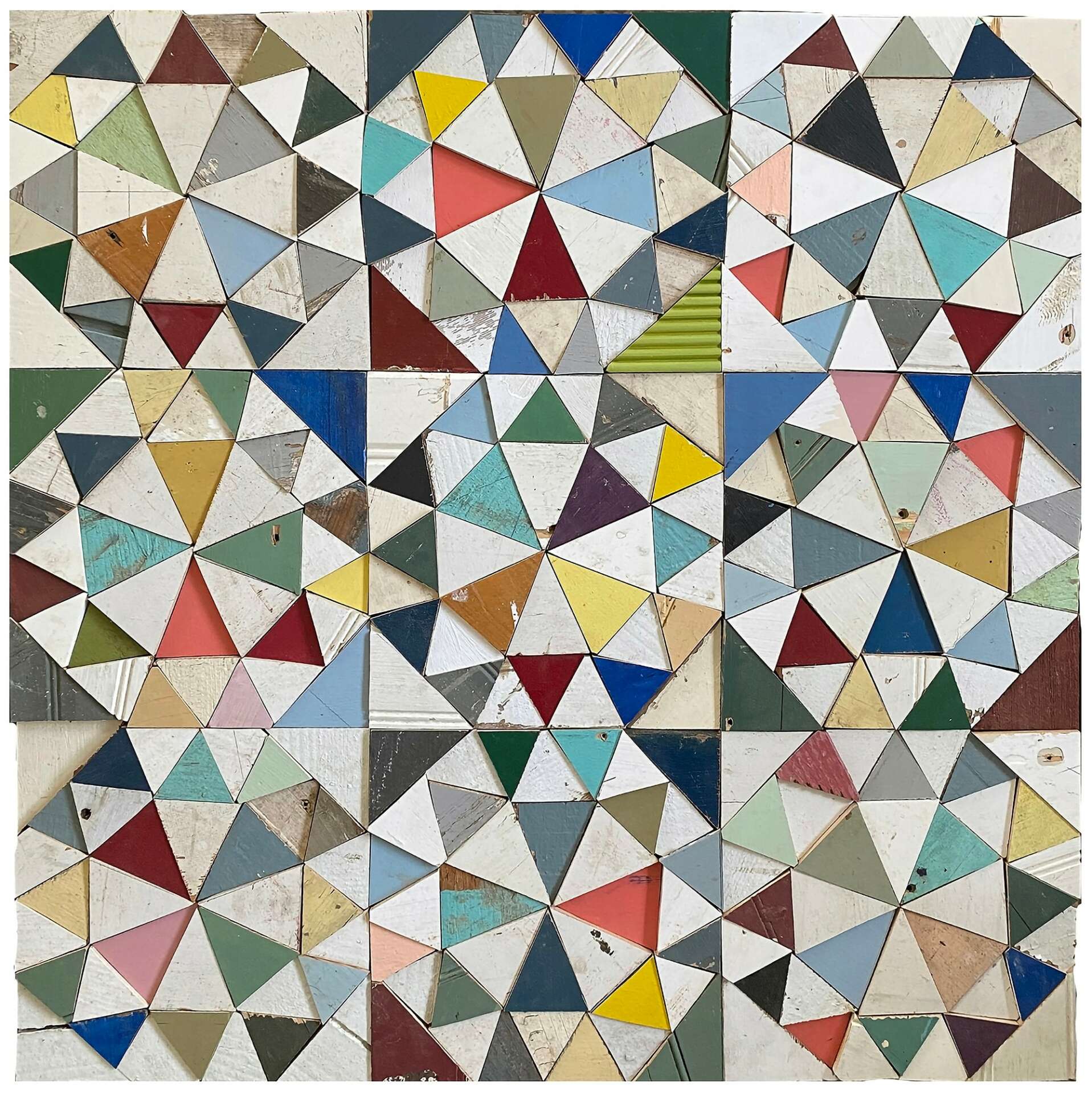
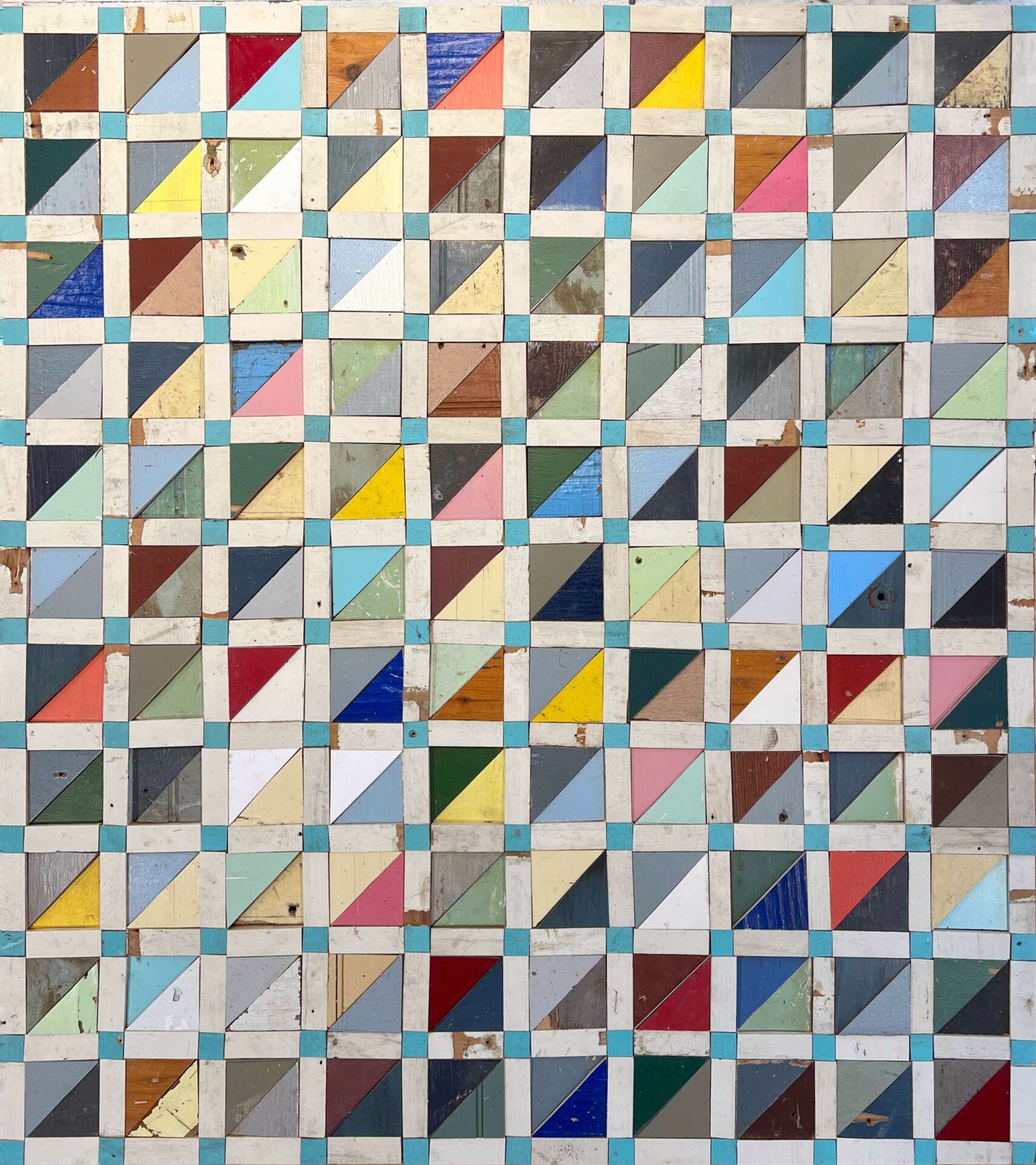
Contact Info:
- Website: www.lauracheney.com
- Instagram: @laurapetrovichcheney
Image Credits
1. profile/head shot: credit: Anna Wolfe Wistran 2. Jubilation, in progress credit: artist 3. The Light in Your Eyes, credit: artist 4. Home Sick: credit: artist 5. studio: credit: artist 6. Entanglement: credit: Jerry Russo 7. A Hop and Skip on display in a home, credit: artist 8. Sunshine and Shadow: credit: artist


